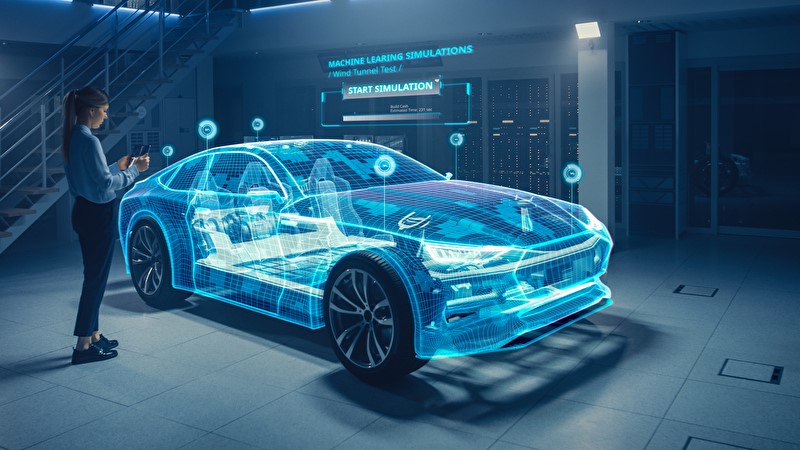"Digital twin"? Sounds like science fiction! But in fact, the virtual replication of real plants, processes or systems is a promising way to advance climate protection.

As we recently showed at //next, digitalisation can also be green. Digital technologies can advance climate protection in many areas of the economy, transport, everyday life and industry. An important tool on this path is the so-called "digital twin". What is it all about? Well, in essence, this term describes the way in which certain production and operating processes are first tested on the digital rather than the real object with the help of virtual images. In this way, material, energy and resources can be saved massively. After all, digital twins consist "only" of data and algorithms.
"We understand the term to mean a concept with which products as well as machines and their components are modelled with the help of digital tools, including all geometric, kinematic and logic data," explains Olaf Sauer, from the Fraunhofer Institute of Optronics, System Technologies and Image Exploitation (IOSB) in Karlsruhe. "A digital twin is the image of the physical 'asset' in the real factory and allows its simulation, control and improvement."
The advantages are obvious: If the manufacturing and product quality of a product is not right, then this is often not least due to the fact that only assumptions and empirical values about later use, operating conditions and loads were made - and served as a basis for development. Unfortunately, these assumptions are not always correct. This is where the digital twin comes into play. With its help, many of these assumptions can be (virtually) checked from the outset.
In principle, digital twins are "pimped" 3D models: first, a real object is digitised with the help of a 3D measurement and made available. External information that could not be captured during the measurement (e.g. on texture) is added. But it is not enough to simply reflect the here and now one-to-one. The whole thing is networked, sensors enable the "static" model to become a dynamic one. A model that is not only simulated, but which can react to different parameters.
There are thus no limits to the areas of application. For example, the driving characteristics of a car can be improved just as the fatigue and corrosion resistance of offshore wind turbines can be tested. Everything on the computer instead of on the runway or at sea. Architects and planners modulate which of their decisions affect the energy consumption of a house and how. The virtual simulation determines the correct use of the heating system in a building. Various what-if scenarios are depicted - and analysed for their energy efficiency. It goes even bigger, of course: what impact can new technologies have on the local climate, air quality in the city and the health of citizens? The digital equivalent of a village, municipality or metropolis provides the answer.
The use of the technology was doubly helpful for the climate, for example, during the expedition of the German research ship Polarstern in the Arctic (Video in German). On board, of course, there was not an abundance of space. With the help of a digital twin, all the researchers were able to measure their assigned cabin online and thus knew which equipment would fit and which would not. In this way, emissions could be saved that would have resulted from flying back and forth.
Of course, they are already working on a virtual image of the Earth (story in German) - for a good cause, of course. In future, the model will simulate the Earth system, including climate development and extreme events, spatially and temporally. In this way, the creators hope, an information system will be created that develops and tests scenarios that show a more sustainable development and thus better inform policy.
You really can't get more "digital twin" for climate protection.
Text: Jochen Schuster
Most popular